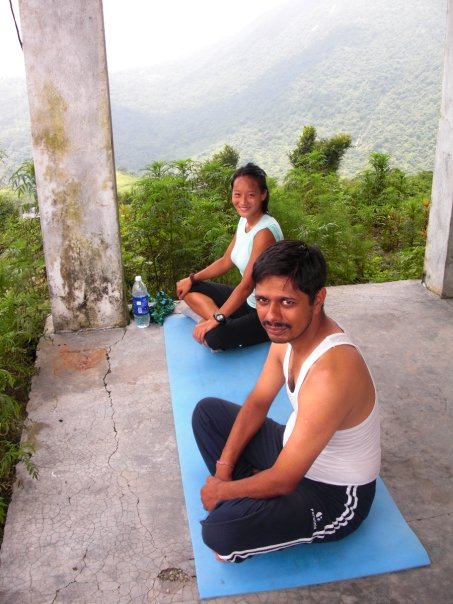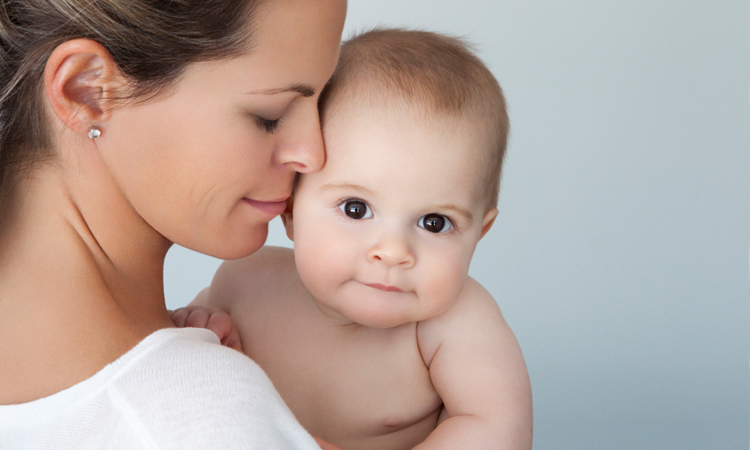“The first step to creating change is awareness. Envision the person you want to become.”
-Rose Caiola
Your mind has a very strong influence on your physical body. The mere thought of sour pickles can make your mouth salivate. Does your nose crinkle when talking about dirty diapers? Did you know that holding a pen between your teeth horizontally will create a smile expression that can actually make your mood more positive?

Positive mood offset occurs when people feel a positive mood without any strong emotional event occurring. Positive mood offset is virtually universal, even among people who live in extremely difficult circumstances [1].
It has been shown to improve fertility, reproductive success and health, and increase ancestral adaptive behaviors, such as creativity, planning, mating and sociality. Because of the ubiquity and advantages of positive moods, a reasonable hypothesis is that humans were selected for positivity mood offset in our evolutionary past [1].
Our daily habits and thoughts contribute to a positive or negative mood, regardless of your situation or environment. Many of us have living conditions, such as physical disease, abuse, financial stressors and mental disorders that are not ideal; this doesn’t mean you cannot live a rewarding and empowering life.
The following are ways to improve your state of mind and achieve your life goals, one day at a time.
1. Creativity and hobbies
Picking up knitting, drawing or a musical instrument could have major positive impacts on your physical health, mental well-being and build resilience to overcome future stressors.
With the growing body of evidence, health policy communities have recognized the health and well-being benefits from creative arts [2]. A dominant theory recognizes creative arts as a strategy to build self-esteem, self-awareness, social confidence and connectedness, especially in children [2].
From music engagement and visual arts therapy to movement-based creative expression and expressive writing, the arts empower people to fulfill the basic human drive to create and allow a sense of possibility. Also, the ambiguity and playfulness inherent in creative expression strengthen a person’s flexibility and resilience [3].
A study with long-term care facilities shows that maintaining independent hobbies and lifestyle is one of the most important factors in improving the lives of elder residents [4].
Five benefits of the arts and hobbies include [3]:
- making the truths of life more real for us
- fulfilling a basic human need to be creative
- helping one to become a more whole person
- having the opportunity to experience joy
- building bridges across diverse backgrounds
Preventive coping are the efforts taken to reduce the likelihood of experiencing, or lessen the impact of, stress in the future. The most commonly and frequently endorsed preventive strategies, especially for people living with mental illnesses, are accessing social support and engaging in activities or hobbies. These two strategies result in a more positive mood at the end of the day [5].
Evidence suggests that creative activities have a healing and protective effect on mental well-being. The therapeutic effects promote relaxation, provide a means of self-expression and reduce blood pressure, while boosting the immune system and reducing stress [6].
2. Meditation
Meditation is a family of emotional and attentional regulatory practices to cultivate a sense of well-being and emotional balance [7].
The most common forms of meditation are [8]:
- Focused attention meditation (FAM)
- Open monitoring meditation (OMM)
- Loving kindness, or compassion, meditation (LKM)
FAM is typically the starting point for any novice meditator, in which the focused attention is on a chosen object or event, such as breathing or a candle flame. Constant monitoring of concentration on the chosen event is required to avoid mind wandering [8].
Once practitioners are familiar with FAM and can easily sustain focused attention on an object for a considerable amount of time, they often progress to OMM. During OMM the focus becomes monitoring of awareness itself. In contrast to FAM, there is no object or event on which the meditator must focus. The aim is rather to remain in the monitoring state, being attentive to any experience that might arise, without selecting, judging or focusing on any particular object [8].
LKM incorporates elements of both FAM and OMM, whereby meditators develop love and compassion for themselves first, and then gradually extend this love to others – such as, from self to a friend, then to someone one does not know and finally to all living beings. Any negative associations that might arise are to be replaced by positive ones [8].
While meditation reduces stress and induces a relaxing state of mind, it can also have significant effects on how people perceive and process the world around them, and alter the way they regulate attention and emotion [8].
Research suggests these meditations have differential, dissociable effects on a range of cognitive processes, such as attentional selection, conflict monitoring, and divergent and convergent thinking. Different kinds of meditations are associated with different neural structures and different patterns of electroencephalographic (EEG) activity [8].

Regional brain stimulus in more practiced meditators correlate with better sustained attention and a significant reduction of self-reported unpleasantness of painful stimuli while practicing OMM [9]. The brain regions associated with attention vary with length of a meditation session and between long and short-term meditators [10].
A study with recipients of solid organ transplants, who are taking immune suppressive medications, shows meditation improves outcomes [11]. The drugs have unpleasant side effects, cause complications, and lead to distressing symptoms that reduce health-related quality of life. Psychosocial stress is one of the most prominent negative sequelae of organ transplantation, and symptoms of depression, anxiety and insomnia are common. Non-pharmacologic interventions, such as meditation, prove to provide transplant recipients relief from some of these distressful symptoms [11].
The neuroscientific study of meditation is still in its infancy, but the initial findings reviewed above promise both to reveal the mechanisms by which such training may exert its effects and explain the plasticity of the brain that underlie complex regulatory mental functions [7].
3. Gratitude
Experiencing and expressing gratitude can lead to increased positive affect, life satisfaction and overall well-being.
Positive psychologists aim their interventions to increase individuals’ happiness and life satisfaction by noting positive events in daily life, expressing gratitude and identifying personal strengths [12].
These strategies and perspectives not only aid in times of stress and helping prevent future difficulties but can also lower blood pressure, improve immune function, promote happiness and well-being, and spur acts of helpfulness, generosity and cooperation [13]. In addition, gratitude reduces lifetime risk for depression, anxiety and substance abuse disorders [13].

Gratitude is a feeling that occurs in interpersonal exchanges when one person acknowledges receiving a valuable benefit from another. Gratitude is a cognitive-affective state typically associated with the perception that one has received a personal benefit not intentionally sought after, deserved or earned but rather because of the good intentions of another person [12].
Gratitude anchors two important perspectives [13]:
- An affirming of goodness or good things in one’s life
- Recognition that sources of this goodness lie, at least partially, outside the self
People who experience high levels of gratitude exhibit more positive states and life satisfaction. Similarly, expressing gratitude has also been linked to greater optimism, higher energy and fewer reported physical symptoms due to the ability to savor positive experiences, people and things, while simultaneously preventing the perceiver from taking these positive aspects of life for granted [12].
Experiencing gratitude provides the opportunity to receive the greatest satisfaction and joy from positive circumstances, while expressing gratitude can serve as an adaptive coping strategy by re-framing difficulties in a positive light [12].
4. Human touch and contact
Contact with other humans and animals triggers a release of oxytocin in the body, which improves stress and overall well-being. So, start hugging and kissing one another more often.

Oxytocin is released in response to sensory nerves’ activation during labor, breastfeeding, sexual activity and food intake. It is not only released during interaction between mothers and infants, but also during positive interaction between adults or between humans and animals [14]. In addition, oxytocin is released in response to low intensity stimulation of the skin, such as in response to touch, stroking or warm temperature [14].
Oxytocin is a hypothalamic nonapeptide and has been linked to the following effects [14]:
- induces well-being by stimulating dopamine release (reward motivation)
- increases social interaction
- decreases anxiety
- decreases stress reactions in the hypothalamic-pituitary—adrenal axis (HPA-axis)
- decreasing noradrenergic release (stress hormone)
- decreases the sensitivity to pain by increasing opioidergic activity
- modulates serotoninergic activity (feel good hormone)
5. Perception and empathy
Our perceptions influence how we think, feel and act towards ourselves, objects, situations and other people. Empathy is developed from a deep reflection of self, which allows one to imagine the experience of another.
Are you the type of person who gravitates towards gossip? Do you journal each night about all the bad things that happened to you in the day? Do you feel like you have bad luck? If so, you might be pre-selecting to acknowledge and remember negative events in your life, as opposed a more accurate representation of positive and negative events.

Our perceptions control our reality. We unconsciously associate words, thoughts and feeling to the things we perceive with our senses – sight, sound, smell, taste and touch. Humans are biased in nature and often don’t even realize that there are infinite ways to interpret the same object, person or scenario.
It helps to put things in perspective when we understanding that our past experiences dictate our thoughts and reactions. It also helps to recognize why someone else may see life differently, which develops into empathy.
Empathy reflects an inter-subjective induction process by which positive and negative emotions are shared, without losing sight of whose feelings belong to whom. Empathy has evolved with the mammalian brain to develop social bonds necessary for surviving, reproducing and maintaining well-being [15].
Empathy is composed of multiple facets [15]:
- Affective sharing – the capacity to become affectively aroused by the type and intensity of others’ emotions
- Empathic understanding – entails the conscious awareness of the emotional state of another person
- Empathic concern – refers to the motivation to care for someone’s welfare
- Cognitive empathy – is similar to the construct of perspective taking, where one has the ability to put oneself into the mind of another individual and imagine what that person is thinking or feeling
We all have control over our perceptions, but rarely acknowledge this ability. It takes consistent and conscious awareness of our motivators and choice in memories. A child-like curiosity about the ways in which we think, speak and act will help guide self-reflection.
Keeping a gratitude journal is one way to reinforce positive memories and experiences, as opposed to remembering negative, emotionally fueled occurrences. Recent studies show self-induced changes in mood can increase the production of serotonin, which is your feel good hormone [16]. So start your daily affirmations.
This article originally appeared on DrAlisonChen.com and is republished here with permission.
- Diener E, Kanazawa S, Suh EM, Oishi S. Why People Are in a Generally Good Mood. Pers Soc Psychol Rev. 2014 Sep 24.
- Atkinson S, Robson M. Arts and health as a practice of liminality: managing the spaces of transformation for social and emotional wellbeing with primary school children. Health Place. 2012 Nov;18(6):1348-55.
- Ettun R, Schultz M, Bar-Sela G. Transforming pain into beauty: on art, healing, and care for the spirit. Evid Based Complement Alternat Med. 2014;2014:789852. doi: 10.1155/2014/789852. Epub 2014 Apr 16. Review.
- Boelsma F, Baur VE, Woelders S, Abma TA. “Small” things matter: residents’ involvement in practice improvements in long-term care facilities. J Aging Stud. 2014 Dec;31:45-53.
- Yanos PT, Rosario A. Preventive coping among people with severe mental illness in daily life: Strategies used and associations with mood. Int J Soc Psychiatry. 2013 Sep 4;60(5):489-491.
- Leckey J. The therapeutic effectiveness of creative activities on mental well-being: a systematic review of the literature. J Psychiatr Ment Health Nurs. 2011 Aug;18(6):501-9.
- Lutz A, Slagter HA, Dunne JD, Davidson RJ. Attention regulation and monitoring in meditation. Trends Cogn Sci. 2008 Apr;12(4):163-9.
- Lippelt DP, Hommel B, Colzato LS. Focused attention, open monitoring and loving kindness meditation: effects on attention, conflict monitoring, and creativity – A review. Front Psychol. 2014 Sep 23;5:1083.
- Perlman DM, Salomons TV, Davidson RJ, Lutz A. Differential effects on pain intensity and unpleasantness of two meditation practices. Emotion. 2010 Feb;10(1):65-71.
- Baron Short E, Kose S, Mu Q, Borckardt J, Newberg A, George MS, Kozel FA. Regional brain activation during meditation shows time and practice effects: an exploratory FMRI study. Evid Based Complement Alternat Med. 2010 Mar;7(1):121-7.
- Gross CR, Kreitzer MJ, Reilly-Spong M, Winbush NY, Schomaker EK, Thomas W. Mindfulness meditation training to reduce symptom distress in transplant patients: rationale, design, and experience with a recycled waitlist. Clin Trials. 2009 Feb;6(1):76-89.
- Owens RL, Patterson MM. Positive psychological interventions for children: a comparison of gratitude and best possible selves approaches. J Genet Psychol. 2013 Jul-Aug;174(4):403-28.
- Emmons RA, Stern R. Gratitude as a psychotherapeutic intervention. J Clin Psychol. 2013 Aug;69(8):846-55.
- Uvnäs-Moberg K, Handlin L, Petersson M. Self-soothing behaviors with particular reference to oxytocin release induced by non-noxious sensory stimulation. Front Psychol. 2015 Jan 12;5:1529.
- Decety J, Fotopoulou A. Why empathy has a beneficial impact on others in medicine: unifying theories. Front Behav Neurosci. 2015 Jan 14;8:457.
- Young SN. How to increase serotonin in the human brain without drugs. J Psychiatry Neurosci. 2007 Nov;32(6):394-9. Review. A
Post Disclaimer
This content is for informational purposes only and does not constitute medical advice. Please consult a healthcare professional for any medical concerns.



